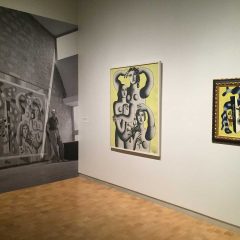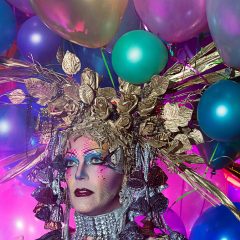In Gentlemen Prefer Blondes, Marilyn Monroe sings (arguably) her most famous song, “Diamonds are a Girl’s Best Friend”. She sings and dances on a magnificent pink stage in all of her pink satin glory, THE image of 1950s femininity and girlishness. I think Immortal Beauty at the Robert & Penny Fox Historic Costume Collection took a cue from that set—I walked into the exhibit, only to be greeted by a space that was like a chic, deep pink, elegant version of what every tiny girl wants their closet to look like when they grow up. Collection curator Clare Sauro set up six platforms displaying fashions in chronological order, the dress forms turning towards the viewer in warm greeting, eager to show us what they are wearing.
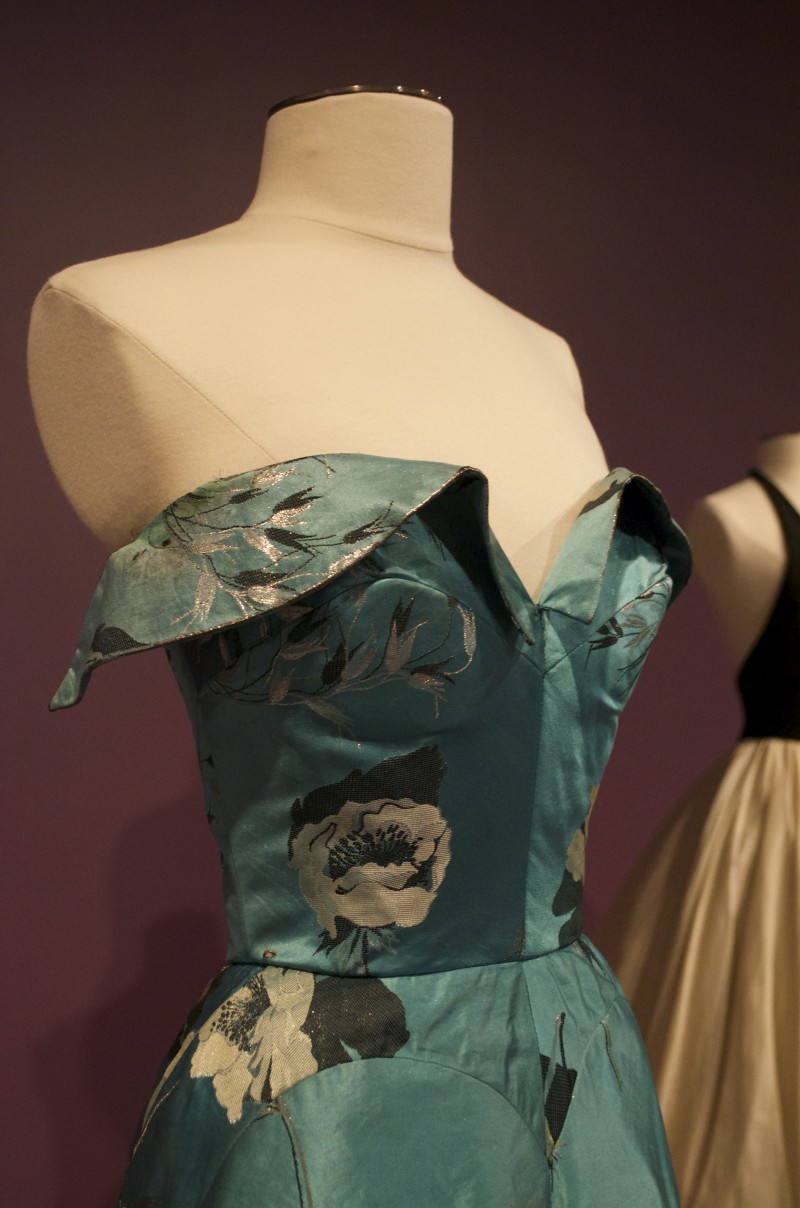
Timeless beauty
The collection was originally founded in the late 1890s by A.J. Drexel, the founder of Drexel University. Since its birth, the collection has served as an academic resource for Drexel’s fashion design students, and other students and scholars who make appointments to view pieces from the expansive collection. Robert and Penny Fox, Penn alumni and members of Philadelphia high society, currently hold the keys to the collection. The couple invested in the collection in order to make it more accessible to the public (for example, holding this public exhibition), and both Foxes serve on a number of arts-based boards around the city.
In this exhibition, the Collection presents—for the first time—its finest specimens crafted from silk and leather, chiffon and jeweled brocade. The collection is all women’s clothing and ranges from the popular day dress à la palonaise from the 1780s, to contemporary additions by Dior, Oscar de la Renta, Manolo Blahnik, and enough Halston to make the most seasoned fashionista weep.
The show is broken up into three parts: Origins, Growth, and Renewal. We are first greeted by Origins, which includes some of the earliest acquisitions of the collection—and its earliest piece, an Italian textile fragment from 1550. The textile is like something we would see a noblewoman wearing in a da Vinci painting, the pattern in the backdrop of a portrait. Walking among these pieces is like looking inside of a time capsule—the clothing and objects that occupied the wearer’s everyday life are like miniature, precious pieces of the paintings and sculptures that we, as a society, have come to prize and treasure as symbols of an ornate and beautiful past. We are reminded that these objects were made with the intention of lasting a lifetime—an idea that seems to have become foreign to all of us who replace our wardrobes with every change of the season.
I’m also reminded of all of the films I love, specifically because they contain objects and costumes that date back to this time—and from there, I realize that everything in those films are based on and inspired by the fashion and accessories resting neatly before me.
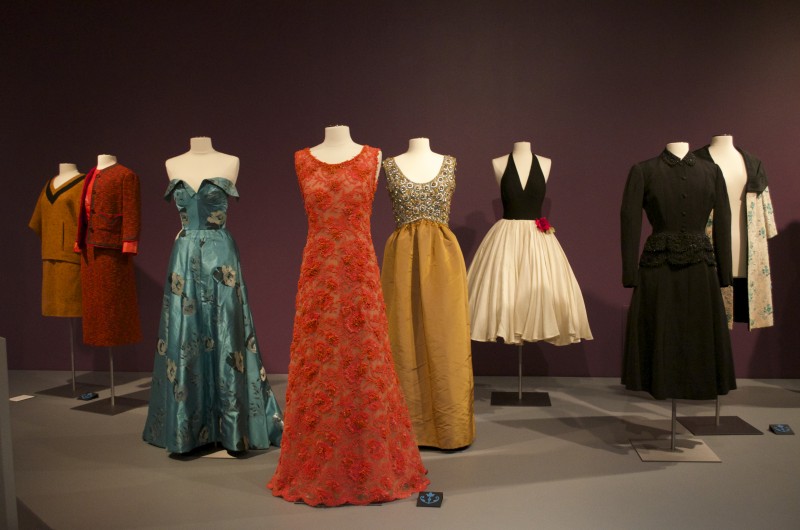
Lace comes to life
There was a particular parasol by La Esmerelda (Hauser Zivy & Cie.) and Peter Carl Fabergé—a French and Russian collaboration from 1900—that has a painting on the end of the umbrella, probably no bigger than a quarter. The umbrella is a creamy, lace frill of a thing presented in an ornate, slim case, and sleeps upon a cream satin pillow. It is the epitome of the sheer opulence and frivolity that went into Fabergé objects—the entire image of ornate flamboyance crammed into one delicate, lacy object. We can imagine a highborn woman carrying an object like this: a woman who completely relied on a husband or family to help her live, and in a way was a sort of show horse displaying her family or husband’s wealth.
The next phase is Growth, focusing on the collection as it was in the 1950s when the Drexel Historic Costume Collection had roughly 2,000 objects and when the Nan Duskin Laboratory of Costume Design opened in 1959. During this time, the collection swelled to over 7,000 objects—evening gowns from the 1800s made of Indian muslin and English silk, silk bias-cut evening gowns from the 1930s, and the beautiful works of Christian Dior, objects we’ve imagined from descriptions by Jane Austen and F. Scott Fitzgerald and have only seen brought to life in the films created from their novels. An evening gown by Charles James from 1948 stands on display at the far end of the room, reminiscent of the dress in John Singer Sargent’s famous “Madame X” portrait. Farther across the platform, a strapless blue James Galanos evening gown from 1959 sits in all of its shimmering, floral-woven blue splendor.
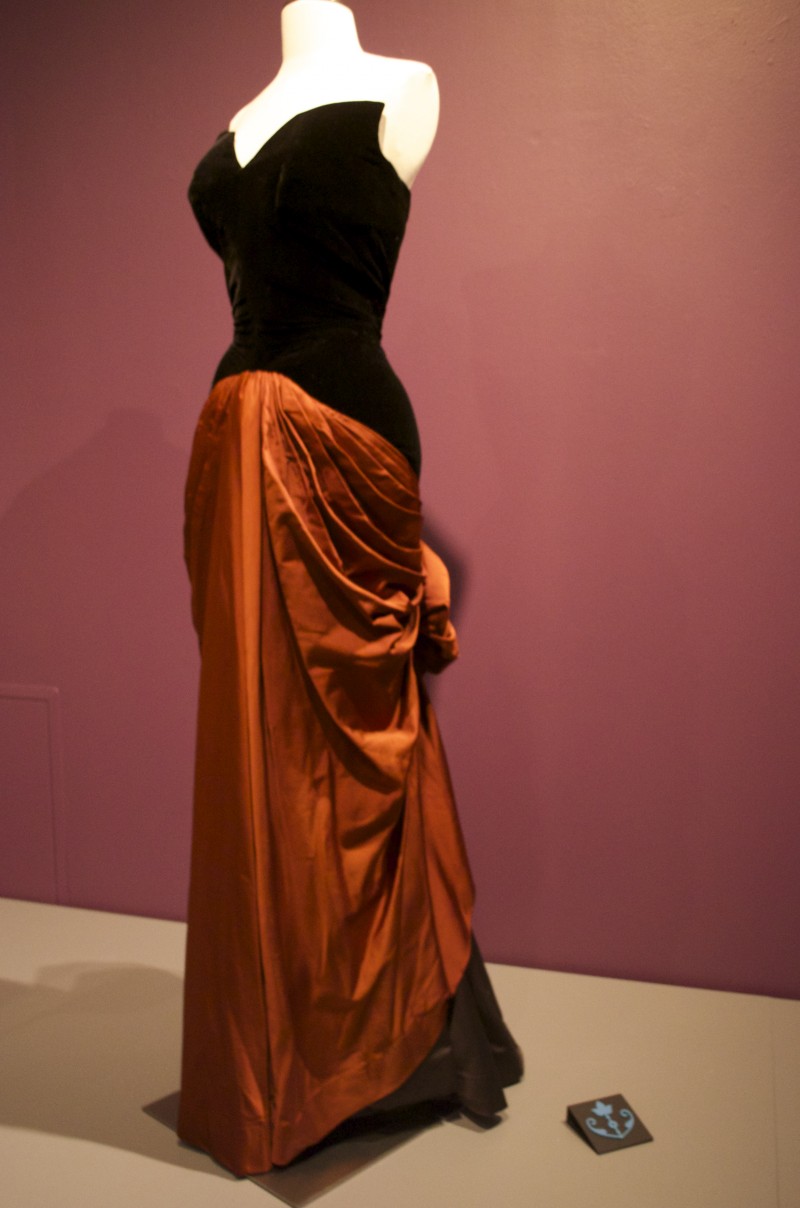
Objects of desire
These two pieces demonstrate the difference in a decade of fashion—the Charles James piece from the 1940s exudes a femme-fatale type allure, while the Galanos from the 1950s is lighter and fresher and holds a certain air of innocence. These two garments are living proof of the stereotypes that women played in the 1930s up until the early 1960s. A woman was the Betty Draper/Grace Kelly Madonna wife making Jell-O for guests in a frothy, floral blue silk number, or she was the Rita Hayworth femme fatale type in velvet and blood-red satin.
The last platforms and cases display the ascent into modern, contemporary, 21st-century fashion, with pieces by Madame Grès, Christian Lacroix, and Carolina Herrera. And while gazing lovingly across the dress forms of sequins and feathers and mesh and lace, my eye was arrested by a showstopping evening gown by Halston. It is like something we’d find on a Hellenistic sculpture—or Angelina Jolie at the Oscars. The most wonderful thing about this garment is its simplicity—the cool, off-white silk is like a breath over the form of the mannequin, the knot at the bust seeming to be the only thing holding the silk to the body.
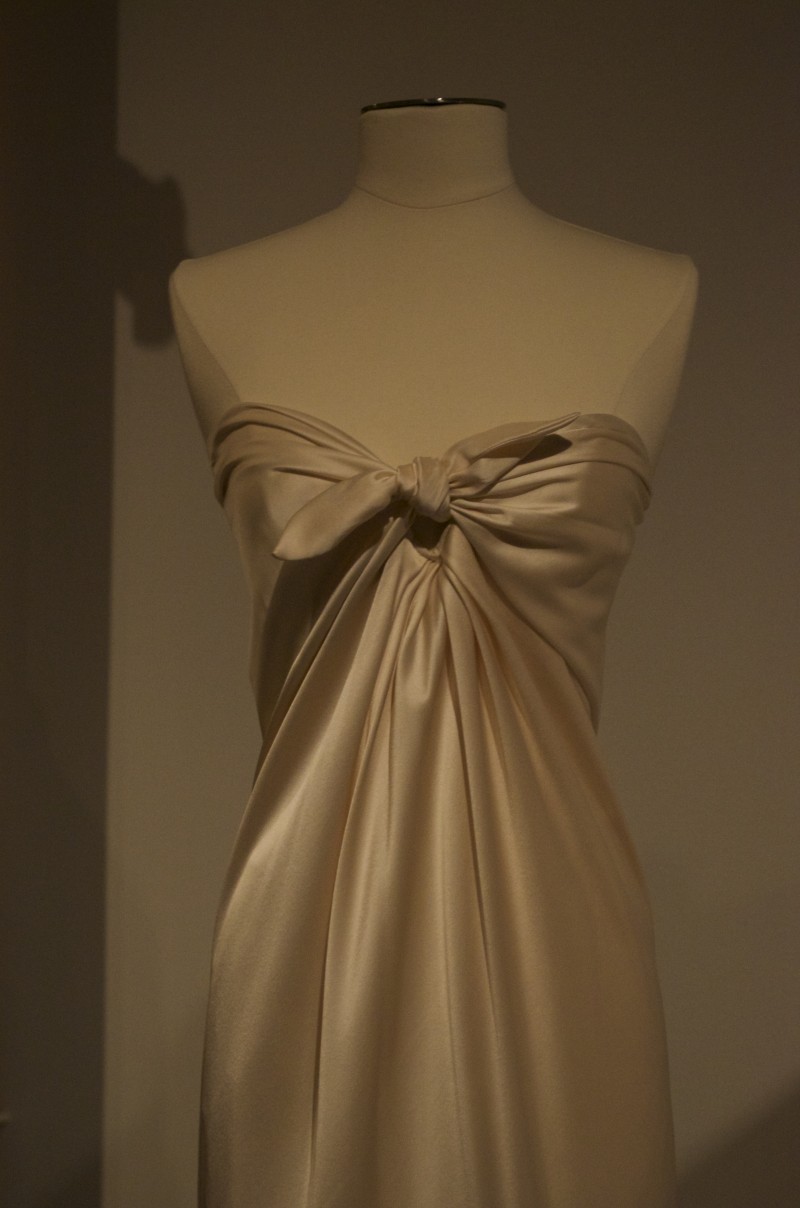
Immortal Beauty. The title of the show is self-explanatory. The Robert & Penny Fox Historic Costume Collection shows us a well-curated, well-preserved fragment of fashion history that displays the creme de la creme of fashion’s finest moments in history—objects that make our hearts beat a little faster (oh Halston, how I yearn for thee) and show top-notch craftsmanship and examples of timeless design. Fashion is known for recycling its ideas and notions and re-forming them again and again. If that idea holds true at all, I can only hope that I will be wearing Italian brocade with beaded Schiaparelli shoes next season.
Immortal Beauty is on view Oct. 2 – Dec. 12 at the Leonard Pearlstein Gallery of Drexel’s Antoinette Westphal College of Media Arts & Design. The gallery is free and open to the public, Tuesday – Sunday from 11 am – 6 pm.


